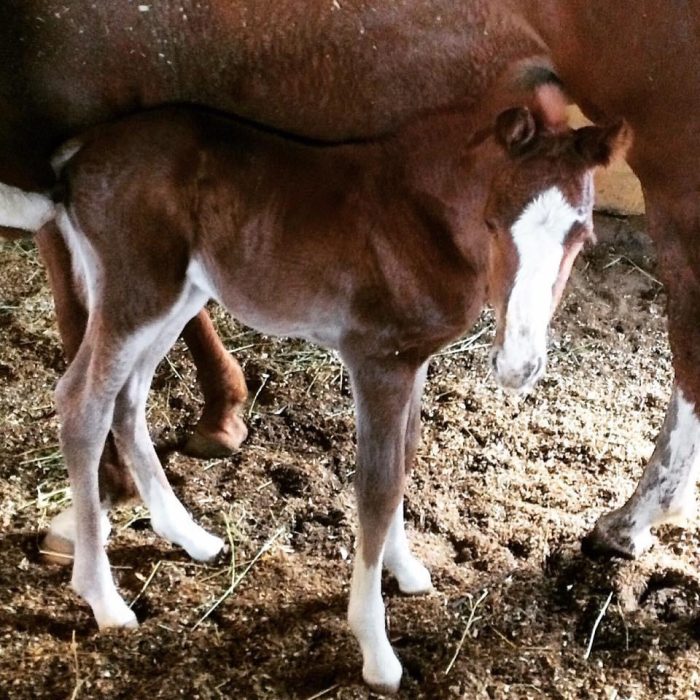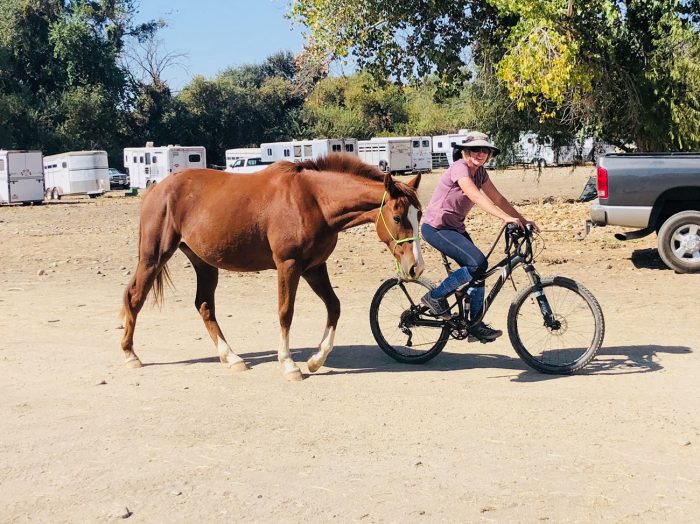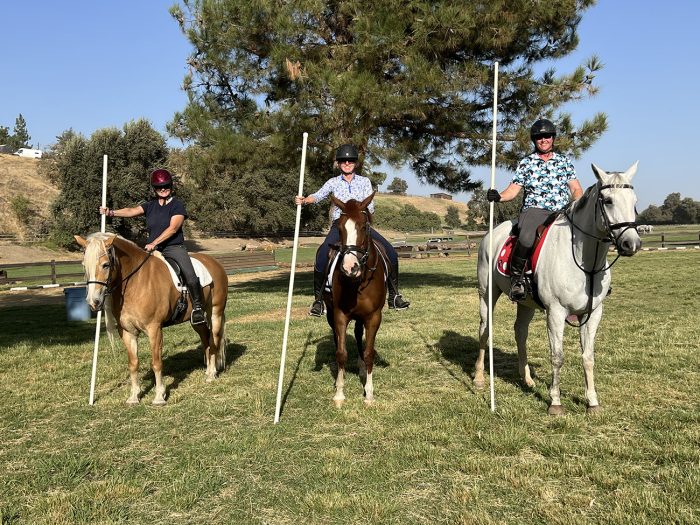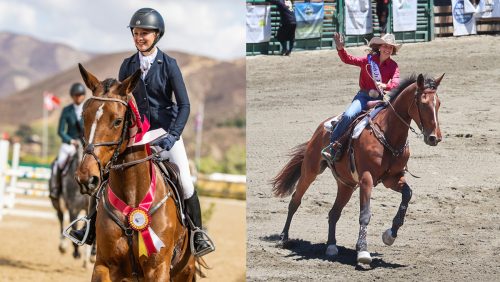Temecula, Calif.—Aug. 27
When Suz Harvey, who came up dabbling in hunters and dressage, began to think about breaking into eventing, she knew she didn’t have the right horse for the sport—or the budget to buy a made mount. But she did have something the scrappy amateur considered even better: a “heart horse” mare and the patience to develop whatever foal she might produce.
“Everybody thought I was crazy,” Harvey said of the decision to breed her grade mare. “They said, ‘You’re crazy. You should just buy something on the ground already, because it’ll have straight legs. You won’t have any issues.’ I’m like, ‘I can’t. I don’t have the money, so this is my one shot—period.’ ”
After three attempts to breed Poison Ivy, the mare finally came up pregnant in 2015 by an Irish Sport Horse stallion, Bridon Beale Street, and Harvey began to think of the foal in utero as her “miracle baby.” The Bay Area rider turned the pregnant mare out at a farm in the nearby Central Valley to graze and rest until the foal arrived.
Harvey’s hopes for her future foal were specific: She wanted a mount that would be willing, talented enough for lower-level eventing and, above all, have a “good mind for an older woman.” Athleticism was secondary to fun. Harvey had cross-country and horse camping on her equestrian bucket list—right below training a baby.

“She wasn’t bred to be a winner; she was bred because I wanted a safe, reliable horse where people can walk by and go, ‘Wow, that horse is awesome. She just stands next to the trailer all day,’ ” she said.
When the mare dropped her foal months later, Harvey named the baby Killian’s Irish Pearl, a nod to her Irish blood. That first California spring day of “Killian’s” life, Harvey was concerned when the baby didn’t have any interest in getting up. What felt frightening at the time she later realized was an early sign of the content, safe and slightly lazy baby she’d hoped “Ivy” would give her.
ADVERTISEMENT
She didn’t know it then, but her worries were better placed with the mare. She lost Ivy to laminitis only a few months after she foaled.
Mourning the loss, Harvey poured all her attention into Killian, who shared her dam’s bright red coat and blaze. Harvey, who works as a dog trainer, had never before started a horse, let alone a foal. She spent hours at the farm with Killian, sometimes just reading a book in her stall, sometimes practicing the halter-breaking basics.
“I had all the time in the world,” Harvey said of the slow approach she took with the foal. She used Clinton Anderson videos to shape her training. “I followed his step-by-step [plans], how to halter-break a baby, how to yield to pressure, how to tie.”
Killian was growing into a companion that was as up for adventure as Harvey. Boarding at an event venue, Lone Tree Farm, in Waterford, California, Harvey entered Killian in costume contests (she once dressed her as a mule, Harvey confesses) and jogged her as a yearling through hunter paces.
“I would go over the jumps and have her trot over the jumps [in-hand], and I did that for three years, so she was exposed to horses, trailers and that whole environment,” she said.

When the rider was finally ready to start the filly under saddle, first swinging a leg over as Killian stood quietly in her stall, the long-anticipated moment proved uneventful. By that point, the baby was “pretty well broke.”
“I took 3.5 years to prepare for that moment,” Harvey said.
ADVERTISEMENT
From there, she developed Killian into the partner she’d had in mind back when she was still browsing stud catalogues. Without the funds for a regular trainer, Harvey made do with frequent clinics and one-off lessons from local trainers.
“Anybody that had a clinic, I would bring my little chestnut mare,” Harvey said of the mare, who grew to 16 hands. “People ask me, ‘Is she a pony? Is she a Connemara?’ She’s kind of this heavyset mare, downhill. I mean, she has everything against a sport horse.
“But she has unbelievable try and personality,” she added.

Harvey took care to bring the mare along slowly and carefully. She entered her first dressage shows and starter level events two years ago. She would have been happy to stay there, she said, but trainer Megan McIver urged Harvey to move up to beginner novice. When the pair took second place in the senior beginner novice division at Twin Rivers Spring International (California) this spring and Harvey realized she’d qualified for the USEA American Eventing Championships, she was “flabbergasted.”
“This is a bucket-list trip, because it’s in California,” Harvey said of qualifying with Killian for the AEC. “We would never have been able to do this in our lifetime.”
The filly who helped heal Harvey’s heartbreak after Ivy’s death has become her steady partner, thanks to the rider’s own dedication and training. Whatever the ribbons bring this week at the AEC, which start with dressage on Friday for the pair, Harvey takes comfort in knowing that Killian is carrying on her dam’s heart-horse legacy. She’s grateful for the mare, and the people, that this sport has brought her.
“Everybody is there, and they have your back,” Harvey said of discovering the eventing community. “I felt that with eventers. You could have anything—it didn’t really matter what kind of horse you brought to the table at all, maybe a Mustang—it doesn’t matter, because we’re all there for the same goal, and that’s to have fun. That’s the appeal.”
If you’re competing a cool horse or pony or have overcome the odds to make it to the AEC, email Hannah Sherk at hsherk@coth.com for a chance to be featured. Be sure you’re following the Chronicle’s coverage of the 2025 USEA American Eventing Championships on Facebook and Instagram @Chronofhorse.














